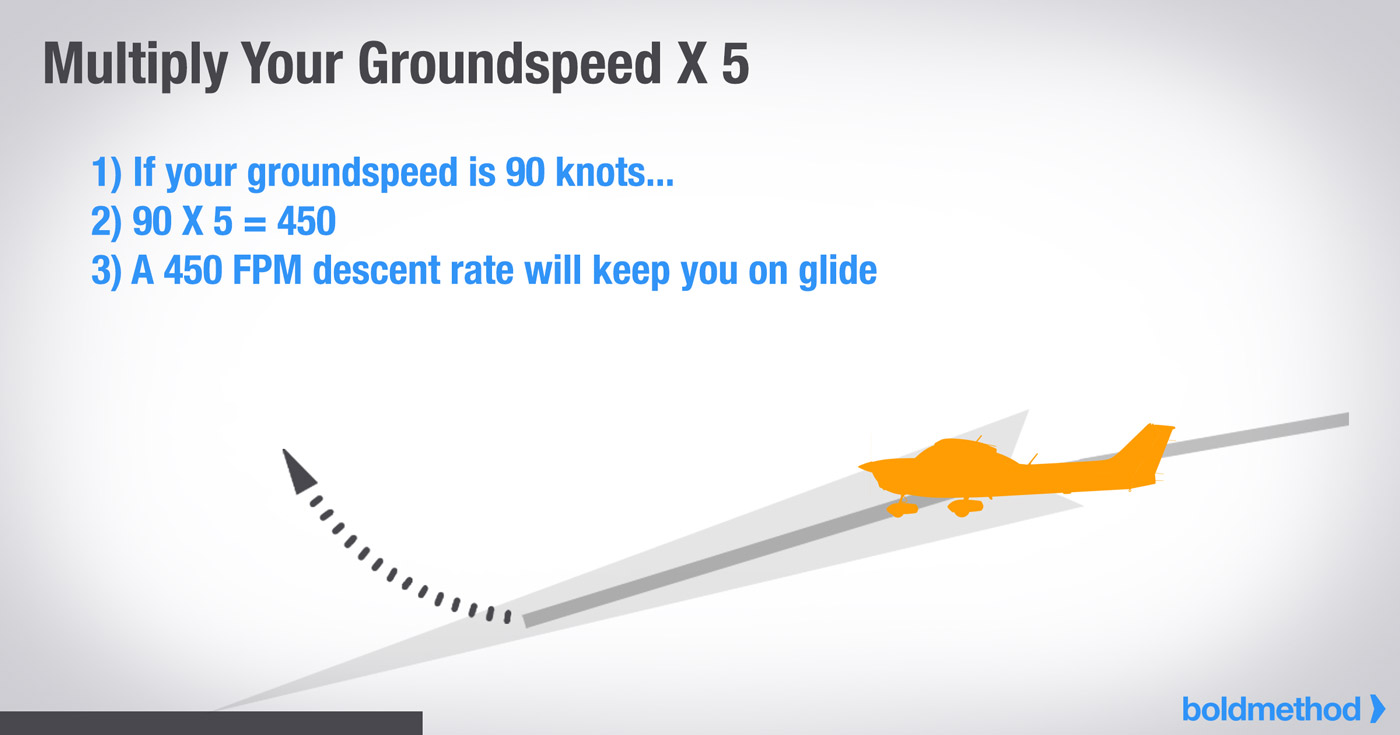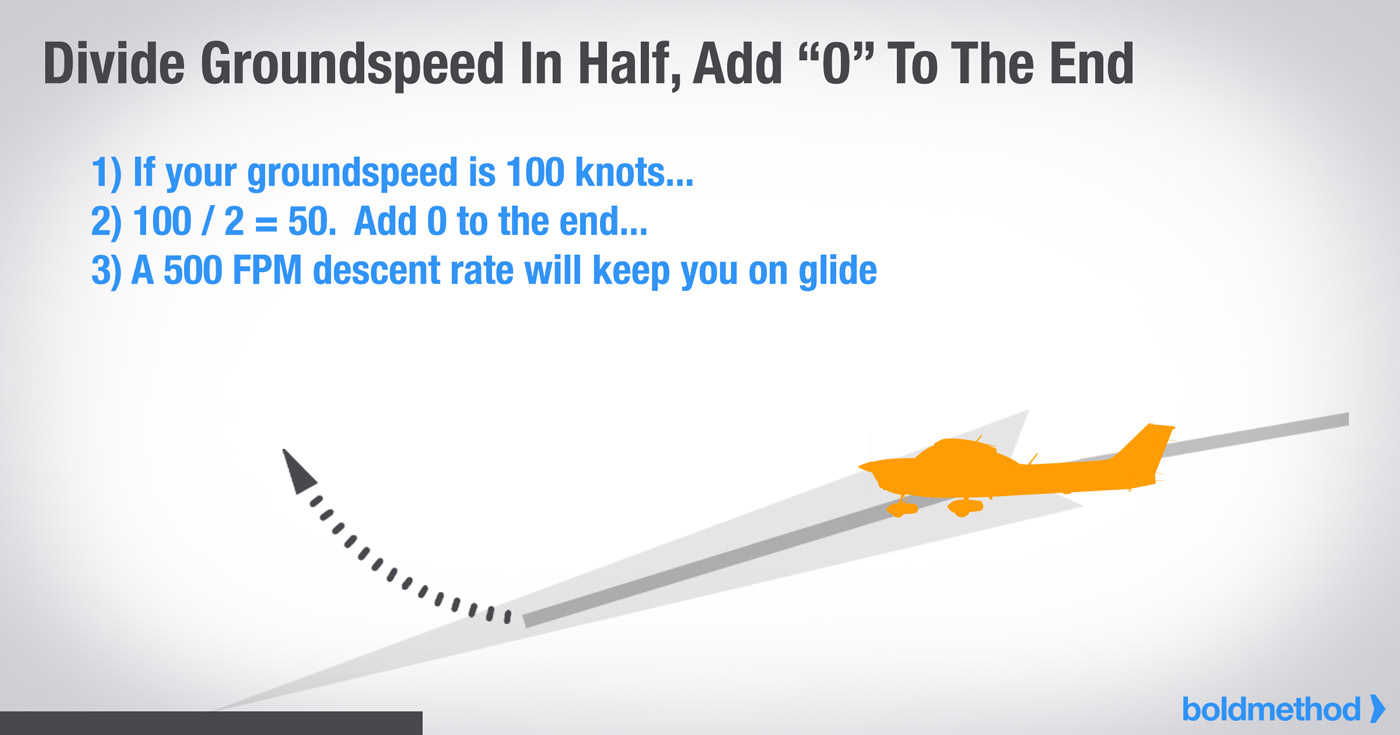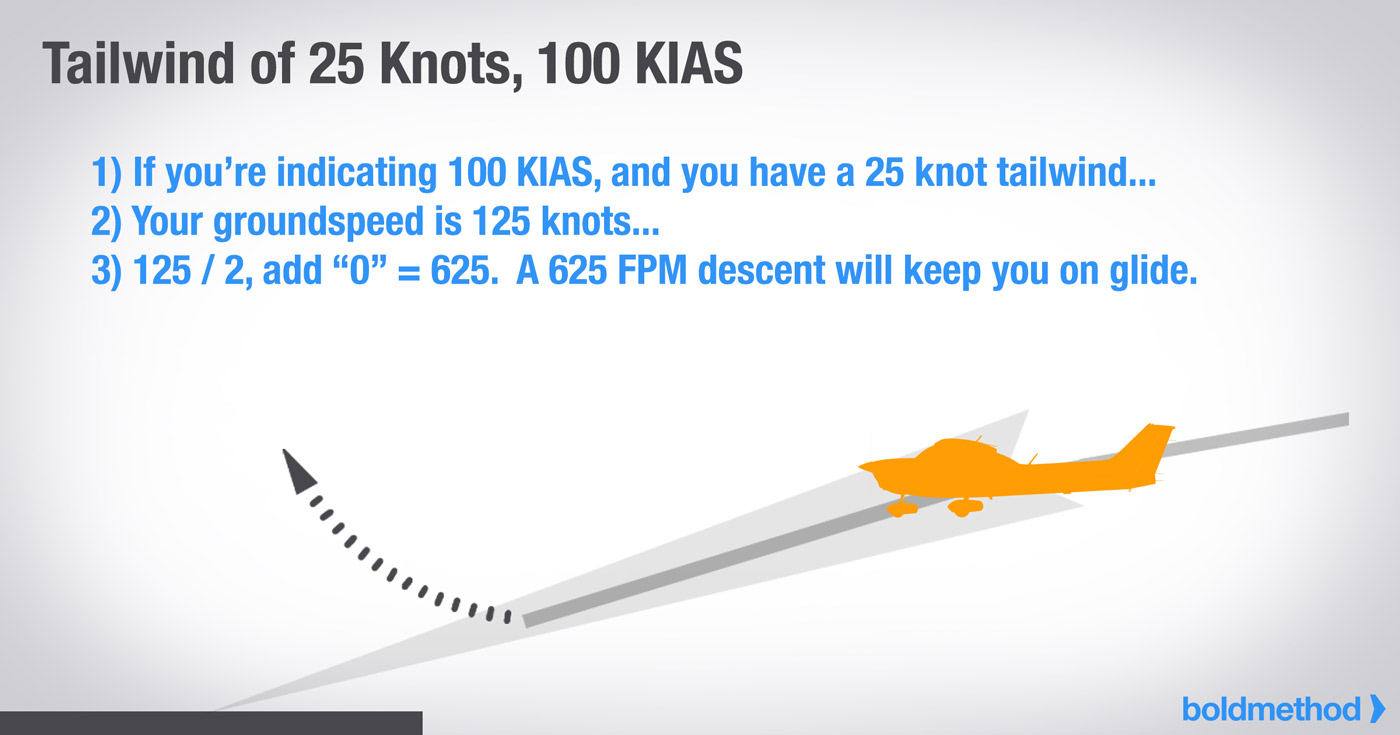02/14/2019

Have you ever found yourself chasing the glideslope on an ILS approach? How about the VASI or PAPI on a VFR final approach?
There's an easier way to do it. Groundspeed has a significant effect on descent rate, and there's a formula you can use to ballpark your feet per minute (FPM) descent, even before you get on glideslope.
The following formulas are a great way to get yourself on glide. In most glass cockpit aircraft, wind vectors and ground track diamonds mean you'll have a easily visible references to use. GPS groundspeed will make the following equations extremely easy to use...
Option 1: Multiply Your Groundspeed By 5
If you're flying your aircraft on a roughly 3-degree glideslope, try multiplying your groundspeed by 5 to estimate your descent rate. The result will be a FPM value for descent that you should target. As you capture the glideslope, make adjustments as necessary.

Option 2: Divide Groundspeed In Half, Add "0"
Divide your groundspeed in half, add a zero to the end, and you'll have an approximate FPM of descent. This is another easy way to target an initial descent rate for a 3-degree precision approach, or a VFR descent into an airport.

Both formulas leave you with the same result. Choosing which formula to use comes down to which mental math you're more comfortable with.
How Wind Affects Descent Rate
A tailwind on final will result in a higher groundspeed, requiring a higher descent rate to maintain glideslope. The opposite is true for headwinds. Let's take a look at a few examples:
Example 1: Headwind of 25 Knots, Final Approach Speed of 100 Knots Indicated Airspeed.

Example 2: Tailwind of 25 Knots, Final Approach Speed of 100 Knots.

Useful For More Than Just ILS Approaches
Looking for a good way to plan out your 3 degree glideslope? These formulas are great references for most instrument approaches with vertical guideance, as well as following any 3-degree PAPI or VASI lights.

No hay comentarios:
Publicar un comentario
Espero atento tus comentarios